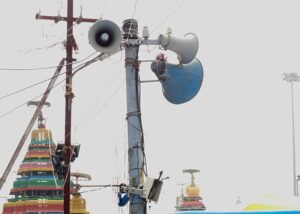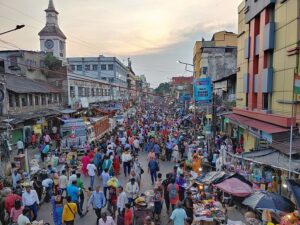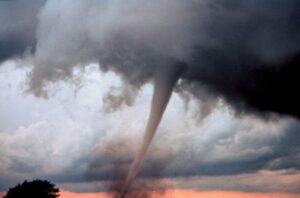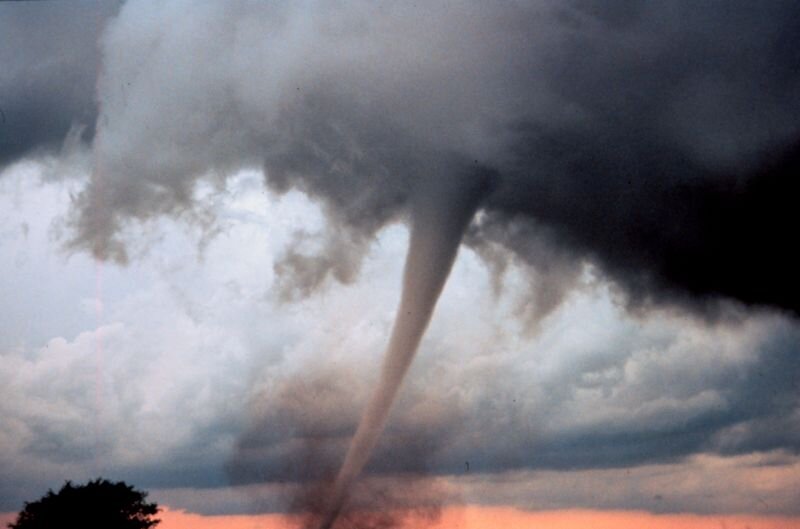5 Sources of Noise Pollution Explained
Sources of noise pollution are; automobile vehicles and aircrafts, electrical speakers, industrial machines, large meetings and events, and naturally-occurring features like volcanoes. The types of noise pollution are; manmade and natural types respectively. Noise sources are also broadly classified as manmade and natural, in line with the existing types.
This article discusses the sources of noise pollution and their attributes, as follows;
-Manmade Sources of Noise Pollution
Manmade sources of noise pollution are; automobile vehicles and aircrafts, electrical speakers, industrial machines and large gatherings.
1). Automobile Vehicles and Aircrafts (as one of the Sources of Noise Pollution)
Two major sources of noise pollution in modern environments are automobile vehicles and aircrafts.
Parts of vehicles that can produce harmfully-loud sounds include the combustion engine, interior sound system and tires.
Generally, the main cause of noise pollution from an automobile is mechanical energy transfer, which occurs under the influence of pressure from combustion gases or air.
Aircrafts also cause noise pollution due to turbulence and friction involving internal and external components.
The main source of noise from aircrafts is the engine, which usually has a gas-turbine aerodynamic design [2]. Mechanical rotation, as well as frictional contact with air currents, cause the aircraft engine to produce sounds with medium to high-intensity.
Noise pollution from automobiles and aircrafts is a major socioeconomic and environmental issue because of the immense importance of transportation toward the social and economic growth of society.
Control and resolution of noise pollution problems from automobiles and aircrafts can be achieved through effective maintenance to reduce unnecessary friction, technological modification, traffic volume-control, and adoption of electric vehicles (which use electric motors in place of noisy combustion engine).
2). Electrical Speakers
Electrical speakers in homes, vehicles and social gatherings constitute yet another source of noise pollution.
Loud speakers cause noise pollution when they are allowed to operate at excessively-loud volume, and with minimal regulation. Sound intensities above 60 dB are easy to achieve on most large speakers, and close proximity to such sound can be hazardous to nervous, auditory and psychological health; especially when such exposure occurs over an extended period.
Regulating the volume and rate of use, of electrical speakers can help address not only noise pollution, but can also be useful toward achieving energy conservation and mitigating the emission of greenhouse gases into the atmosphere (from fossil fuel-energy resources that are combusted to generate electricity).
Aside speakers, other electrical appliances like blenders and washing machines can cause noise pollution under certain conditions. The common use of such appliances in everyday life implies that noise pollution from them (as a collective source) is a matter of concern, especially in urban areas, and regions that regularly play host to social gatherings like rallies and festive events.
Various potential solutions to electrical appliance-noise have been proposed. Some innovative concepts have also been developed to utilize high-intensity sound as a form of acoustic energy. These concepts include piezoelectric conversion and utilization of sound waves to generate electricity [1].

3). Industrial Machines (as one of the Sources of Noise Pollution)
Artificial or manmade sources of noise pollution include machines used in industries for various purposes.
Machines and tools are major sources of noise in the workplace, which in turn poses health and safety risks to workers [3].
The cause of noise produced by machines in factories and other industrial outlets is a range of energetic processes including vibrations and collision [4].
Types of industrial noise can be distinguished based on intensity, consistency and frequency into high, low and intermittent categories.
Industrial machines and equipment that contribute to noise pollution include; rotating belts, crushers, turbine rotors, pneumatic drills, blowers and saws.
4). Large Meetings and Events
Large meetings or gatherings, and all kinds of events can act as sources of noise pollution.
Events cause noise pollution as a result of the presence of large groups of people, whose activities often include the use of loudspeakers and other sound-amplifying systems that can have a disruptive acoustic effect on the environment. In a commercial context; large gatherings generate noise through human speech, transport of goods, and use of equipment.
Applicable solutions to noise pollution from large meetings and events include regulation of sound system-volume, and crowd control measures.

-Natural Sources of Noise Pollution
Natural sources of noise pollution are features and processes like volcanoes, wind, hailstorms and cyclones.
5). Naturally-Occurring Features and Processes (as one of the Sources of Noise Pollution)
Natural sources of noise pollution are processes and features whose occurrence is accompanied by sound of an abrupt, disruptive and highly-intense nature.
These are mostly natural hazards; although other non-hazardous phenomena like wind can also produce noise.
Examples of natural noise pollution sources are; volcanoes, rainstorms, earthquakes, tornados, and cyclones.
The effect of noise pollution from natural sources is generally lower than that from manmade sources; because of the short-term characteristic of natural noise pollution.

Conclusion
Sources of noise pollution are;
1. Automobile Vehicles and Aircrafts
2. Electrical Speakers
3. Industrial Machines
4. Large Meetings and Events
5. Naturally-Occurring Features and Processes
References
1). Chaithanya, D. J.; Vardhaka, V.; Anitha, S.; Ramya, B.; Aisiri, A. P. (2021). "Power Generation Using Sound by Piezo Electric Material." Journal of Physics Conference Series 1916(1):012003. Available at: https://doi.org/10.1088/1742-6596/1916/1/012003. (Accessed 10 May 2023).
2). Farooqi, Z. U. R.; Sabir, M.; Zeeshan, N.; Murtaza; G.; Hussain, M. M.; Ghani, M. U. (2020). "Vehicular Noise Pollution: Its Environmental Implications and Strategic Control." AUTONOMOUS VEHICLE AND SMART TRAFFIC. Available at: https://www.intechopen.com/chapters/71662. (Accessed 10 May 2023).
3). Owoyemi, J..M.; Falemara, B. C.; Owoyemi, A. J. (2017). "Noise Pollution and Control in Wood Mechanical Processing Wood Industries." Biomedical Statistics and Informatics. Vol. 2, No. 2, 2017, pp. 54-60. Available at: https://doi.org/10.11648/j.bsi.20170202.13. (Accessed 11 May 2023).
4). Wegener, K.; Bleicher, F.; Heisel, U.; Hoffmeister, H-W.; Moehring, H-C. (2021). "Noise and vibrations in machine tools." CIRP Annals - Manufacturing Technology 70(2). Available at: https://doi.org/10.1016/j.cirp.2021.05.010. (Accessed 11 May 2023).



